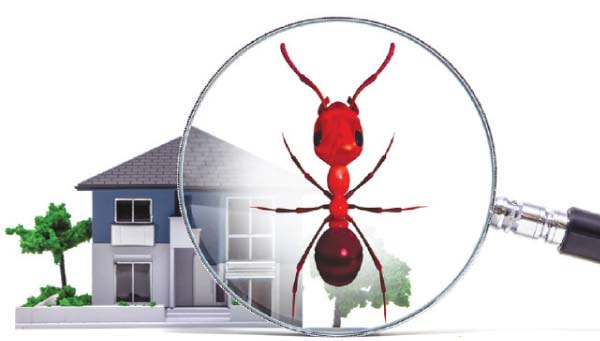Homeowners invest in quality materials that ensure the durability of their properties. In doing so, they also pay extra to worry less about the condition of their homes. Sadly, there are some unforeseen circumstances that catch homeowners off guard despite extreme caution. Termite infestation is an example of a problem that, when not detected early, can cause severe damage to the extents to the structure of a home.
There are several things that termites need, such as moisture, to survive. According to orkin.com, termites feed on materials like wood, books, furniture, and drywall coverings. What’s frightening is that when they feel at home in your house, they can start new colonies and infest your property even more thoroughly.To avoid losses, here are telltale signs of termite presence to look out for.
Shelter tubes.
Notice if there are any shelter tubes in fan pattern along foundation walls. The article “9 Signs of Termites Infestation” by killtermitesguide.com says these tubes mostly originate from the ground crossing barriers such as metal capping, and on walls or foundations. It explains that the tubes protect the termites from predators and maintains a dark and humid environment for food storage and development of termites. The article also says the area occupied by termites gives an idea of how many are infesting your home. If the space is around 10 millimeters, “they contain soldiers and workers foraging for food.” And if it 50 millimeters or wider, “they consist of large numbers of workers and soldiers transporting food and this is the stage which is the most destructive.”
Floor plan.
Observe floor areas that are sagging, as these may indicate termite infestation. Termites burrow into the wood in a honeycomb pattern without coming closer to the surface, says killtermitesguide.com. But as they feed into it, they make the wood weaker. You can inspect your walls, ceiling, or floors by tapping on them to identify hollow areas that can signify termite infestation. Look for swollen areas that could be accompanied by mold or mildew-like odor as well.
Termite noise.
The site describes this as “audible tapping” that may be heard from areas most heavily infested. “The sound comes from the soldiers tapping their mandibles and heads on the wood this is to signal the rest of the colony. The continuous transfer of the signal to the rest of the termite population often increases the sound hence the reason why it can be heard,” it adds. “Termites often excavate the wood — leaving a thin layer intact – and most excavation varies from large galleries to hollowing depending on the termite species.”
Droppings.
Drywood termites are usually found in subtropical countries. They leave pellets or termite droppings, says orkin.com, that look like “small, ridged, wood-colored pellets.” These usually fall from the ceiling or furniture so be the lookout for these when you sweep the floor or clean your walls. After clearing these areas, monitor it regularly to confirm infestation, until it can be inspected by an expert.
Swarming near lights.
Light can attract flying termites, especially at night. Observe areas near your window or doors for congregations of termites in the air that appear to be swarming. Do the same for your porch or home foundation. The faintest sign should drive you to call an expert so they can gauge the best solution for the level of infestation you have.
See any wings?
Termites shed their wings as they develop. If you happen to see piles of wings in an area of your home that look like tiny fish scales, consider it as a warning sign.
[source] https://lifestyle.mb.com.ph/2018/05/30/termite-be-trouble/


